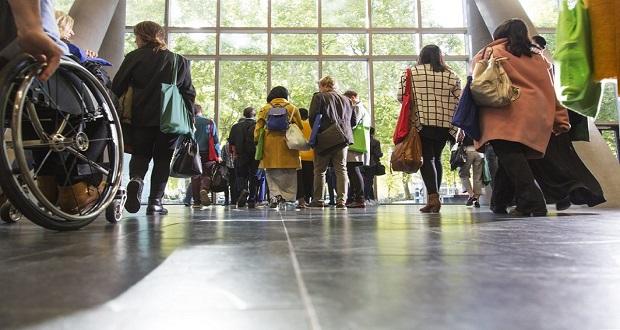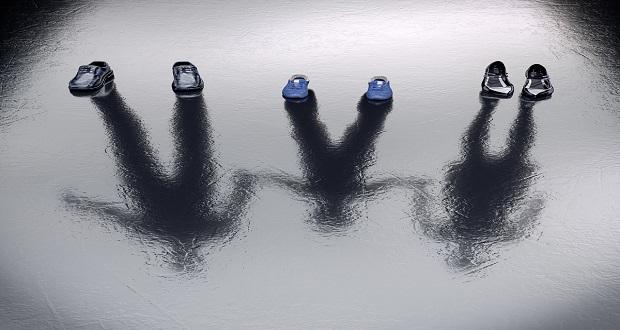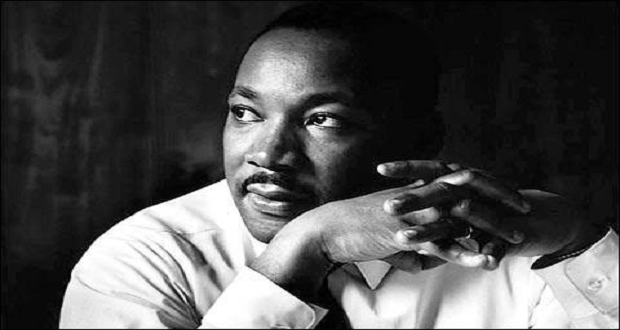
Before July 26, 1990, many American citizens were denied employment based on bias. Many were refused service at businesses. Many were subject to inhumane treatment. What came on that date was a milestone in our nation’s history. President H.W. Bush summarized the occasion with a simple yet overdue statement: “Let the shameful walls of exclusion finally come tumbling down.”
It was a celebration of commitment to full and equal opportunity for all citizens, not in terms of race, gender or religion, but disabilities. The Americans with Disabilities Act (ADA) was signed into law that day, making it the world’s first comprehensive civil rights law for people with disabilities. Decades of struggle and protests had finally been heard. Almost 29 years later, however, many organizations treat the ADA as an option rather than a requirement.
One in four Americans report having a disability, making this one of the largest “minority” demographics in the nation. This identity often extends further than people’s stereotype of what disability is “supposed” to be. Up to 96 percent of chronic conditions are invisible for at least some time, according to the U.S. Census Bureau. Invisible disabilities can be diverse – cancer, HIV/AIDS, multiple sclerosis, epilepsy and mental illnesses.
As humans, we put everything into a box, including people. But the patience and complexity necessary to understand an invisible disability, or any disability for that matter, doesn’t conform to boxes. The patriarchy doesn’t know what to do with a non-binary person, and the ableist world doesn’t know what to do with a person who uses a wheelchair one day and not the next.
The ableist world doesn’t know what to do with a person who uses a wheelchair one day and not the next. Share on XWe begin to judge people, like assuming a seemingly healthy person who gets out of a car in a handicapped spot is a liar. Sometimes this judgment leads to nasty words or even violence. People with disabilities have begun to police themselves because of this. Someone with epilepsy might not take a handicapped spot. Someone with cerebral palsy might wait for the regular bathroom. Someone with cystic fibrosis might take the stairs instead of the elevator. They learn to make sacrifices for others’ emotional comfort.
I worked in a local government office where I rewrote the ADA procedures for that county. I spent hours reading every word, diagram and revision of the ADA, but I also dedicated an equal amount of time to being with people with disabilities. I learned that, yes, the ADA ensured there were policies and procedures set up to promote inclusivity in the workplace, but just because an infrastructure is supportive doesn’t mean the people will be.
We need to stop seeing a disability as something a person “suffers” from. When we do this, we either create pity or force bravery upon them. This pedestal of inspiration prevents them from being seen as themselves because now they are a story to be exploited in the company newsletter. When we make someone’s greatest achievement waking up in the morning, we are not celebrating them. We are discriminating against them with an “us versus them” tone.
We need to stop seeing a disability as something a person “suffers” from. When we do this, we either create pity or force bravery upon them. This pedestal of inspiration prevents them from being seen as themselves because now they… Share on XDisability rights deserve a seat at the social justice table, and people with disabilities deserve to be at the head of these programs. We ensure that a woman or a member of the LGBTQ+ community is the face of their respective programs. How can we champion the same “not about us without us” mantra if we don’t include people with disabilities in that, too?
Disability rights deserve a seat at the social justice table, and people with disabilities deserve to be at the head of these programs. Share on XWhether we push them away with pity or push them forward as an object of inspiration, we deny people with disabilities a common humanity. But we must view our similarities and create an inclusive environment. We must make room for them at the table. We must finally knock down those shameful walls of exclusion we cheered for the fall of 28 years ago.


















